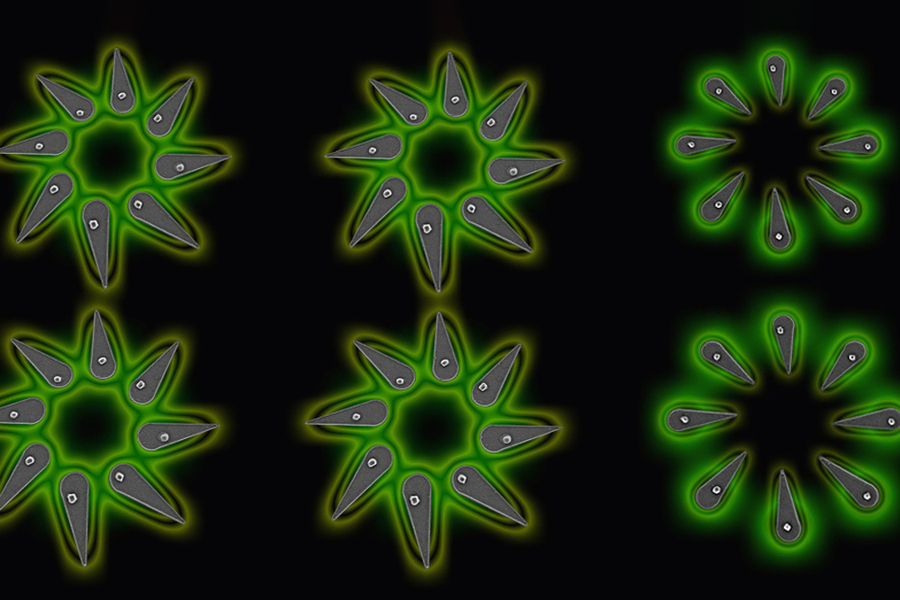Nanopixel: The Tiny Building Blocks of Next-Generation Displays
What are Nanopixels?
Nanopixels are the smallest addressable elements in a display device, typically measuring less than 100 nanometers in size. They are the fundamental building blocks of next-generation, ultra-high-resolution displays that offer superior image quality, energy efficiency, and flexibility compared to traditional pixel technology.

Advantages of Nanopixels
Nanopixels offer several key advantages over conventional pixel technology:
- Ultra-High Resolution: The nanoscale size of nanopixels enables the creation of displays with extremely high pixel densities, resulting in ultra-high-resolution images with stunning detail and clarity.
- Energy Efficiency: Nanopixels consume less power compared to larger pixels, as they require less energy to switch between different states. This energy efficiency leads to longer battery life in portable devices and reduced overall power consumption.
- Improved Contrast and Color: Nanopixels can be engineered to exhibit superior contrast ratios and a wider color gamut, resulting in more vibrant and accurate colors, deeper blacks, and brighter whites.
- Flexibility and Durability: Nanopixel-based displays can be fabricated on flexible substrates, enabling the creation of bendable, rollable, and even stretchable displays. Additionally, the nanoscale size of the pixels makes them more resistant to physical damage and wear.
Technologies Enabling Nanopixels
Several cutting-edge technologies are driving the development and implementation of nanopixels in display devices:
Quantum Dots
Quantum dots are nanoscale semiconductor crystals that can emit light of a specific wavelength when excited by an external energy source. By precisely controlling the size and composition of quantum dots, researchers can create nanopixels with tunable optical properties, enabling displays with a wide color gamut and high brightness.
Nanostructured LEDs
Nanostructured light-emitting diodes (LEDs) are another promising technology for nanopixel displays. By engineering the nanoscale structure of LED materials, such as nanowires or quantum wells, researchers can create highly efficient and compact light sources for individual nanopixels, enabling high-resolution and energy-efficient displays.
Plasmonic Metasurfaces
Plasmonic metasurfaces are artificially designed nanostructures that can manipulate light at the nanoscale. By incorporating plasmonic metasurfaces into nanopixel arrays, researchers can control the color, intensity, and direction of light emission from individual pixels, leading to advanced display functionalities such as holography and light field displays.
Applications of Nanopixel Displays
Nanopixel-based displays have a wide range of potential applications across various industries:
Consumer Electronics
Nanopixel technology can revolutionize the display quality of smartphones, tablets, laptops, and televisions, offering consumers ultra-high-resolution, energy-efficient, and flexible screens for immersive viewing experiences.
Virtual and Augmented Reality
Nanopixel displays can significantly enhance the realism and visual fidelity of virtual and augmented reality systems. The high pixel density and wide color gamut of nanopixel displays can create more lifelike and engaging virtual environments, while their flexibility and light weight can improve the comfort and portability of VR/AR headsets.
Medical Imaging
Nanopixel technology can advance medical imaging displays, such as those used in radiology and surgery. The ultra-high resolution and superior contrast of nanopixel displays can help medical professionals better visualize and diagnose medical conditions, leading to improved patient outcomes.
Challenges and Future Perspectives
Despite the promising potential of nanopixel technology, several challenges need to be addressed for its widespread adoption. One major challenge is the scalable and cost-effective manufacturing of nanopixel arrays. The precise control and assembly of nanoscale components require advanced fabrication techniques and stringent quality control measures.
Future research in nanopixel technology will focus on developing novel nanomaterials and fabrication methods to improve the performance, stability, and manufacturability of nanopixel displays. The integration of computational design and machine learning techniques will accelerate the optimization of nanopixel architectures for specific applications. Additionally, the exploration of hybrid nanopixel systems, combining multiple nanoscale technologies, will open up new possibilities for advanced display functionalities and device form factors.
Further Reading
ACS Nano, 3D-Printed Quantum Dot Nanopixels
Nanomaterials, Design and Modeling of Light Emitting Nano-Pixel Structure (LENS) for High Resolution Display (HRD) in a Visible Range
Science Advances, Scalable electrochromic nanopixels using plasmonics
